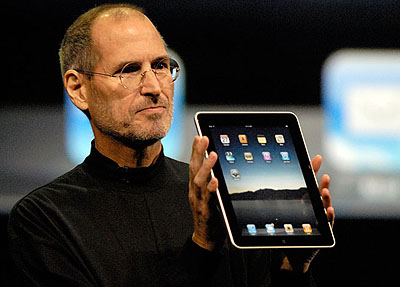What exactly was covered in the great Patent Trial of the Century between Apple and Samsung? I’ve had a surprisingly hard time figuring this out. However, after reading the verdict, the patents themselves, and a bunch of news summaries, it seems to me that there may be less than meets the eye here. As near as I can tell, the jury found Samsung guilty of violating the following Apple patents:
- Patent 381, which covers inertial scrolling (the faster you move your finger, the faster a list scrolls) and the “bounce,” or “rubber band” effect when you reach the end of a list.
- Patent 163, which covers tap-to-zoom (on an iPhone, if you double tap a document, that section of the document is zoomed and centered).
-
Patent 915, which covers a programming
 interface for responding to finger scrolls and gestures.
interface for responding to finger scrolls and gestures. - Several design patents that cover the exact physical look of the iPhone and iPad (rounded corners etc.) and the exact look and feel of the icon layout on the home page.
That’s it. The design patents (generically known as “trade dress”) actually seem the least important here, since even Apple admits that many other manufacturers of touch devices have both physical and home page designs that don’t infringe Apple’s patents. Apple’s complaint against Samsung was more about the totality of Samsung’s designs than about specific individual infringements, and it’s possible that Samsung really did go too far in slavishly copying Apple’s look and feel. Still, even if they did, that doesn’t affect the rest of the world much.
As for the others (generically known as “utility patents”), they’re pretty limited. It’s not clear if Samsung violated patents for both inertial scrolling and scroll bounce (the jury verdict just says Samsung violated a particular listed claim that includes both), but I doubt that inertial scrolling is off limits to the rest of the world now. It’s just too obvious to patent. As for the bounce effect, this story suggests that Steve Jobs thought it was the greatest thing since sliced bread, but I suspect we’ll all survive just fine even if no one else is allowed to use it.
Tap-to-zoom is a nice feature, and it would be unfortunate if Apple truly owns something like this. At the same time, it’s not that big a deal if other manufacturers have to figure out a different way to zoom and center things.
Finally, the API patent just puzzles me. I guess I’m not smart enough to figure out what it really covers. My reading of Claim 8, which is the one covered by the verdict, is that it’s nothing more than a generic description of how an API works. It does suggest that the operating system should respond differently to single-finger and multi-finger inputs, and that multi-finger gestures can be used for scaling. Does this mean that Apple now has a patent on using two fingers to zoom in and out or to rotate a document? I can’t quite tell.
On that last point, I would very much like to read something really authoritative. But I haven’t quite found anything. Jon Brodkin’s coverage of the trial doesn’t seem to mention anything about pinch-to-zoom or rotation, but that’s not dispositive. If anyone can point me to a truly expert analysis, I’d appreciate it.













